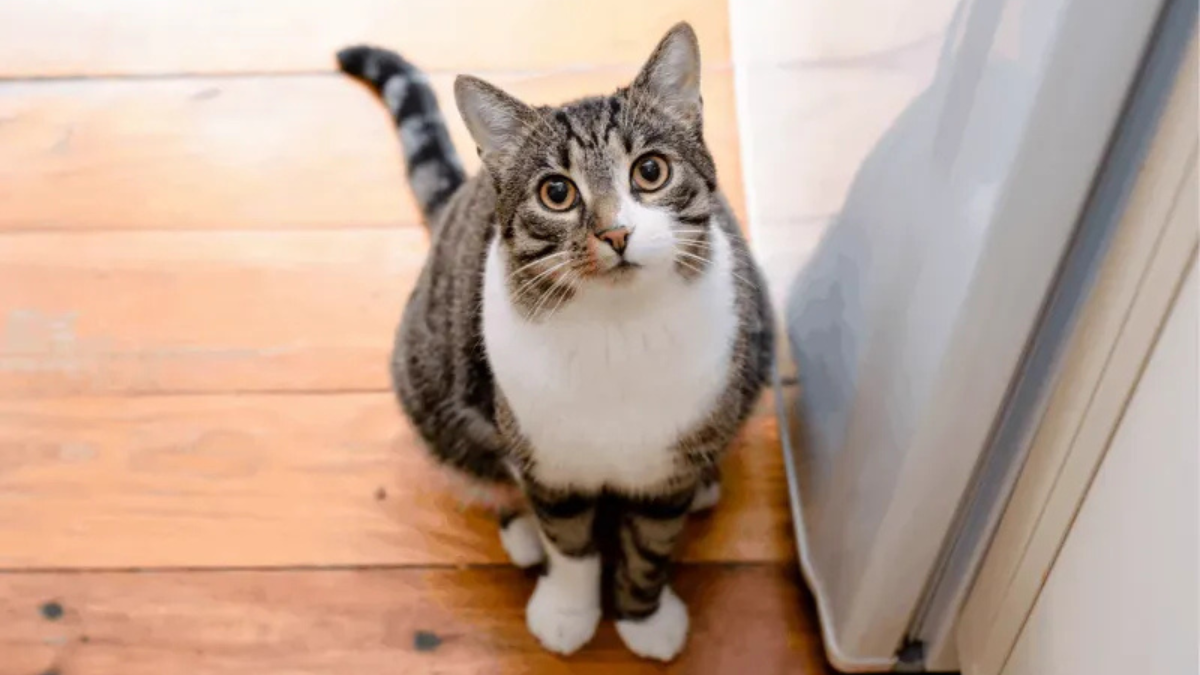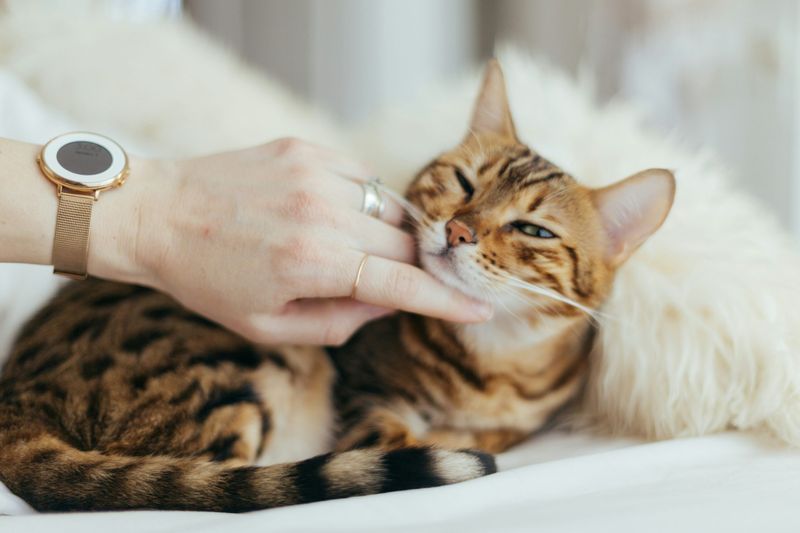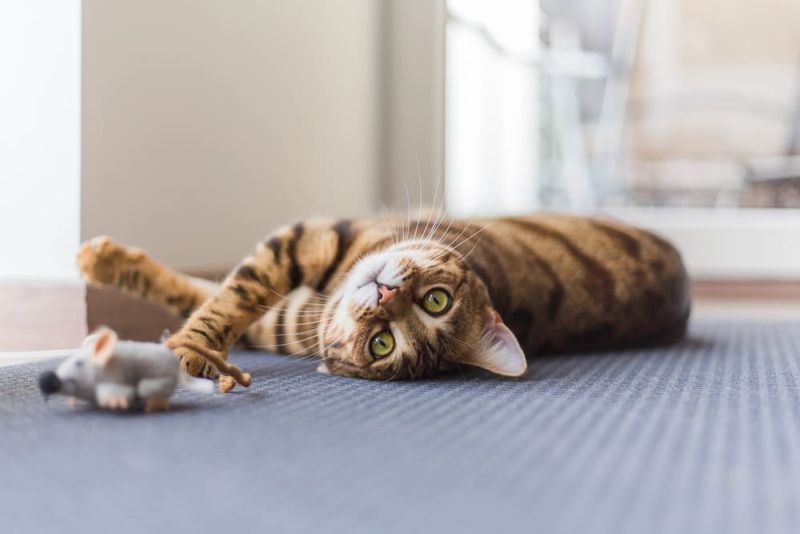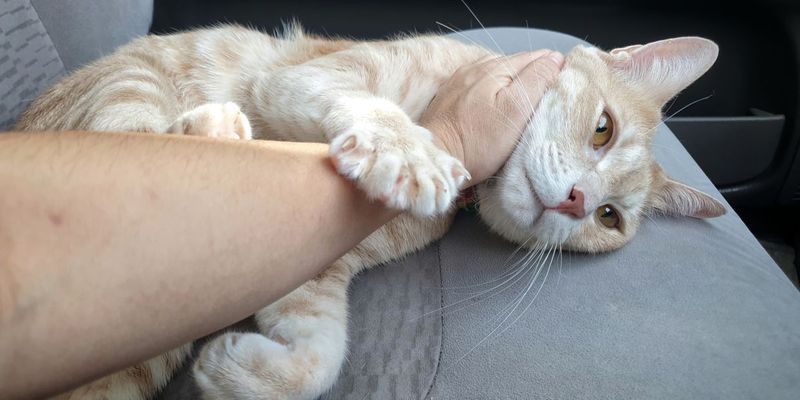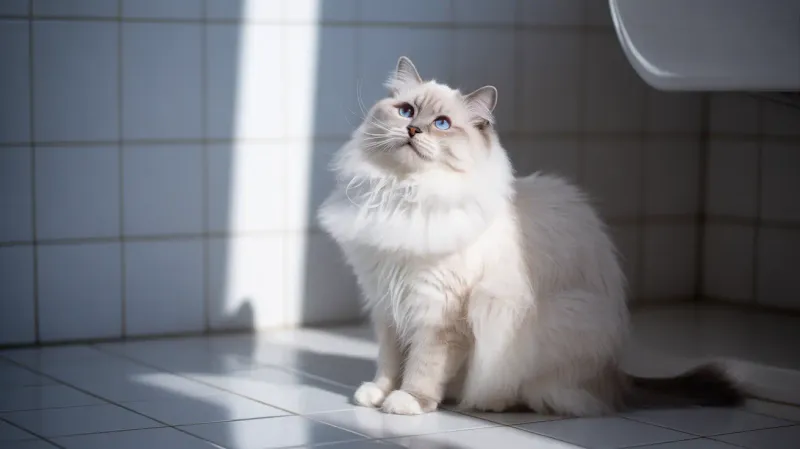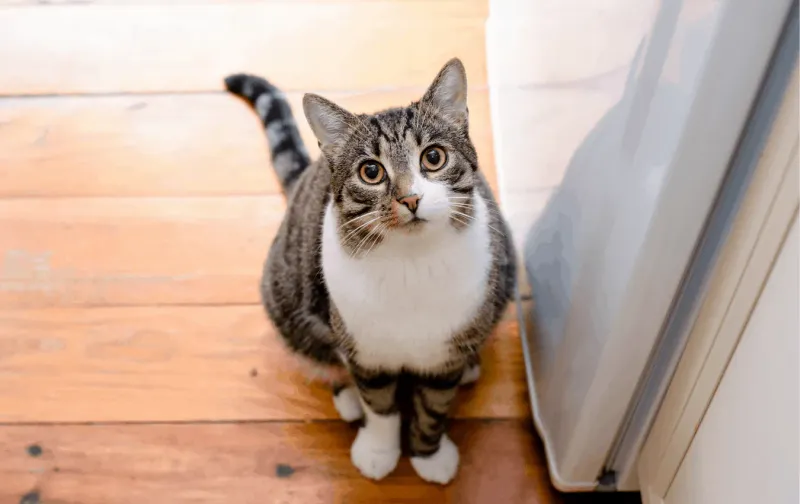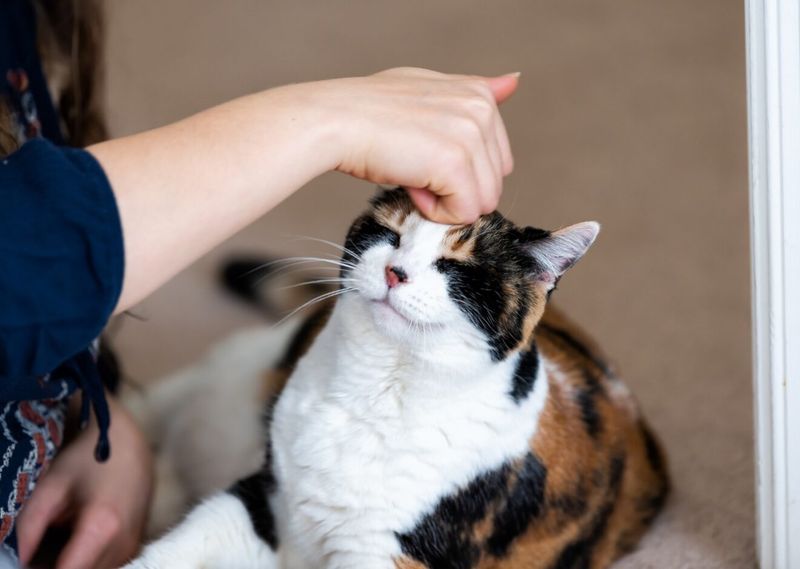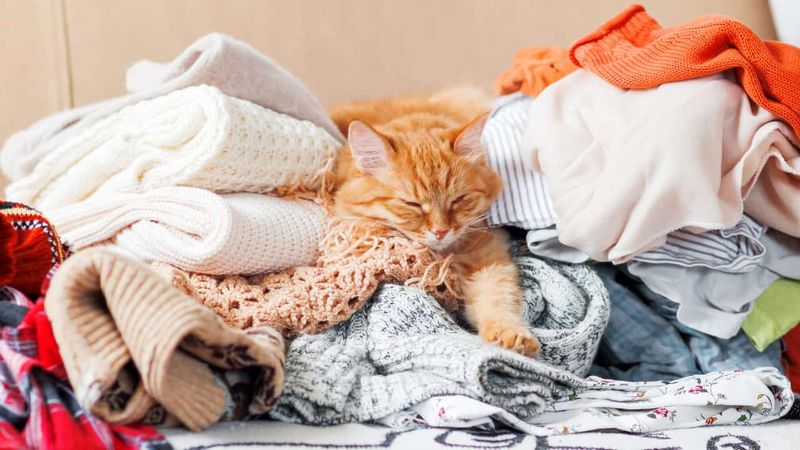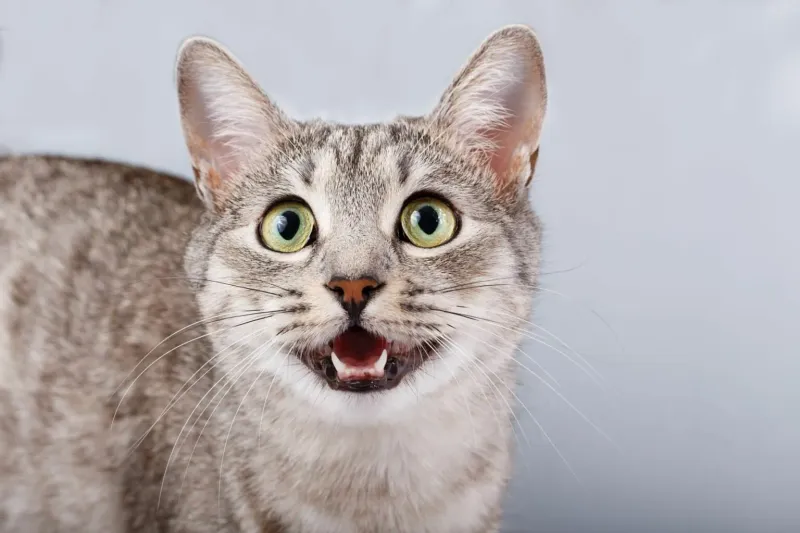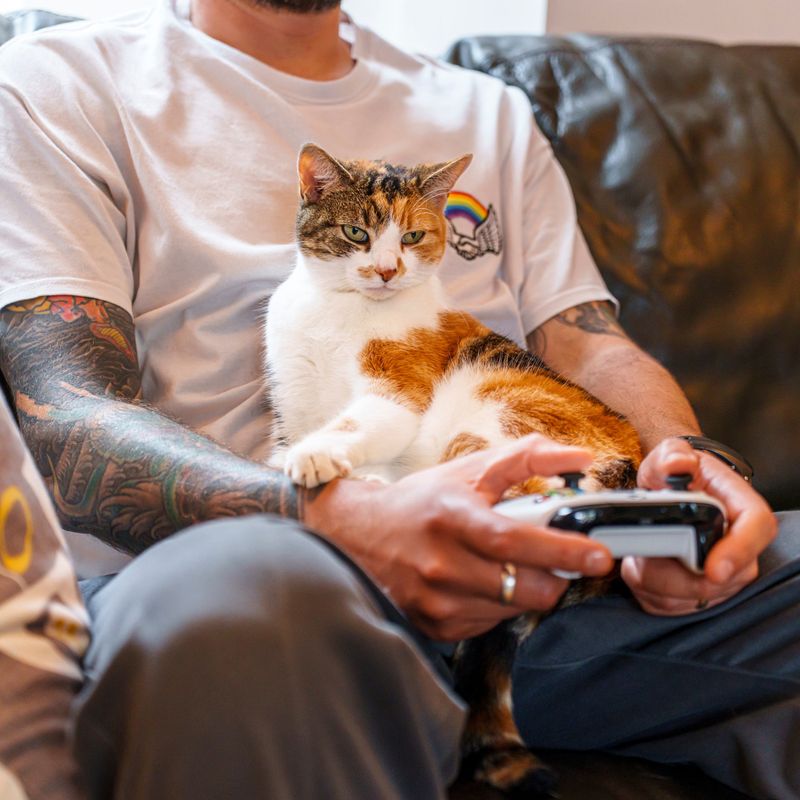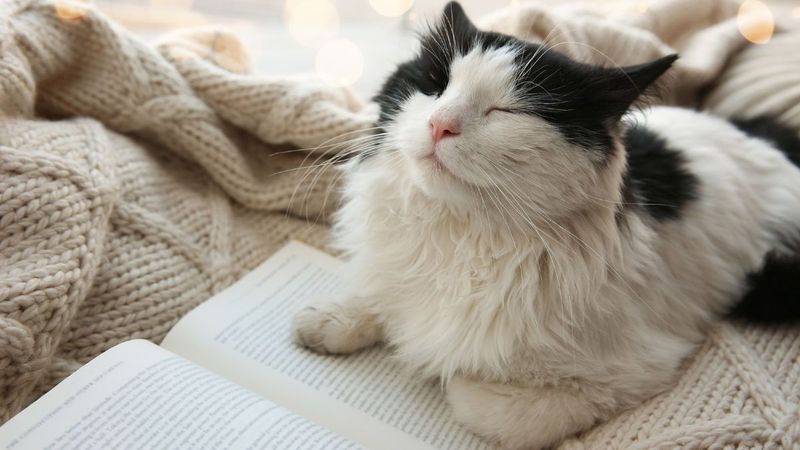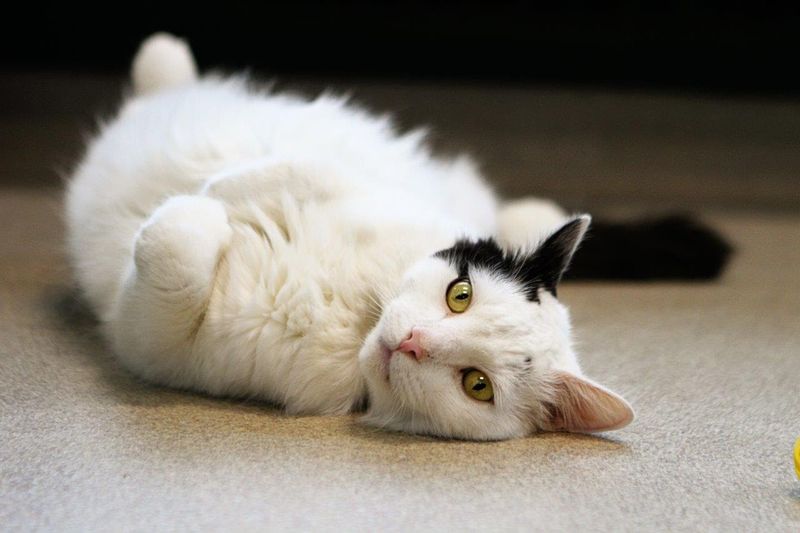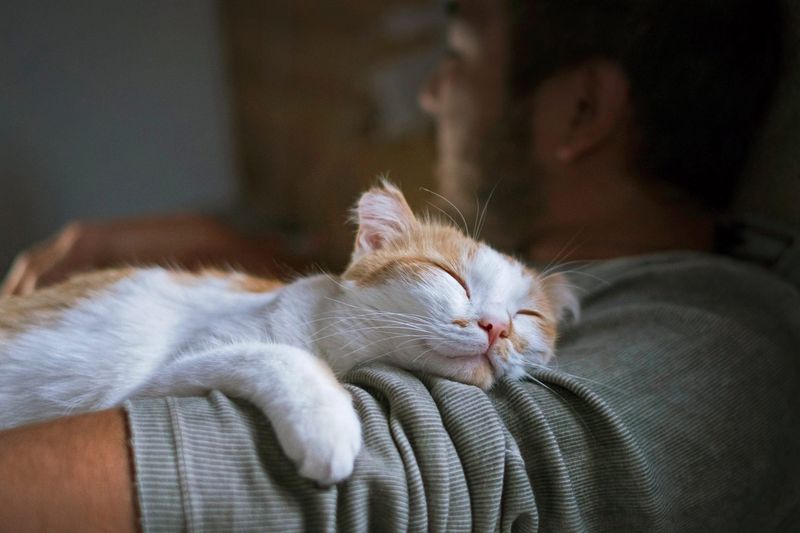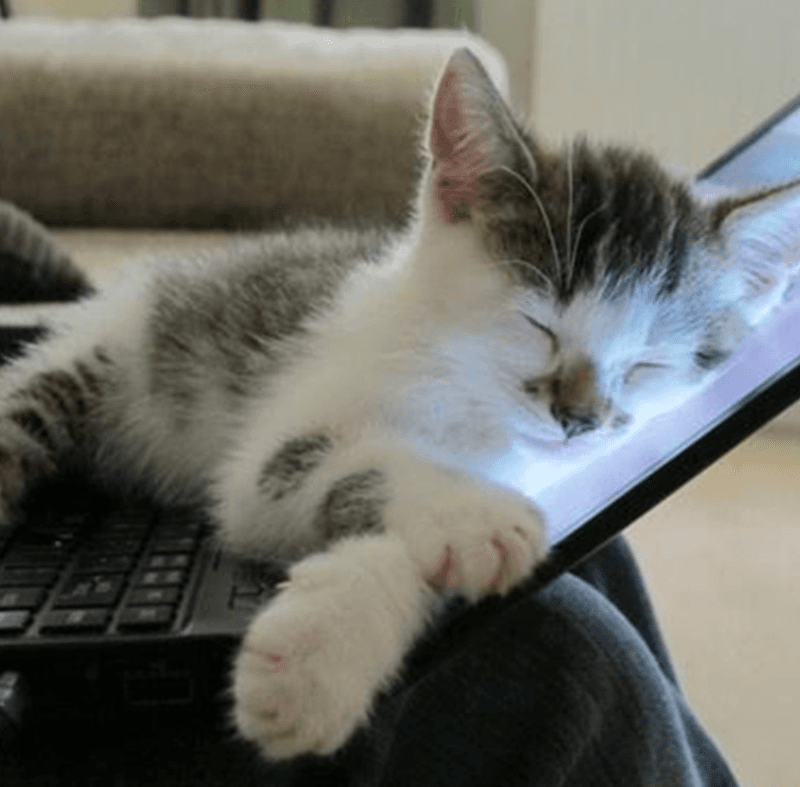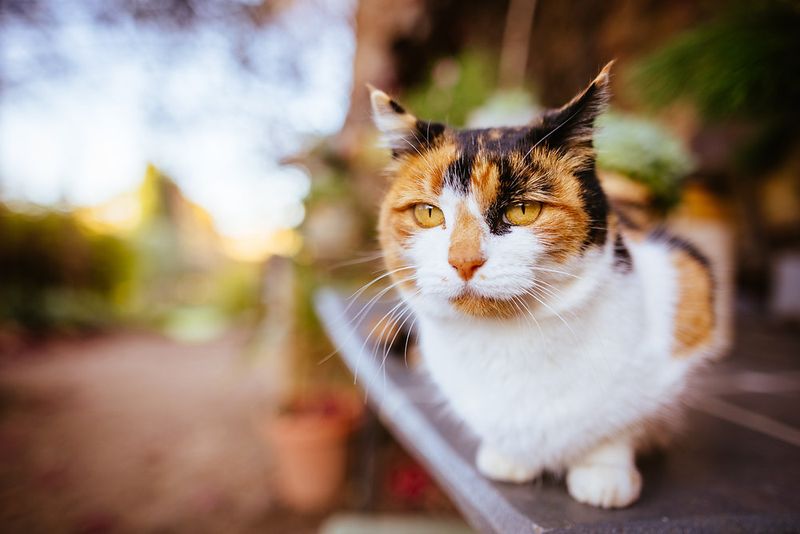📖 Table of Content:
- 1. Slow Blinks That Speak Volumes
- 2. Bringing You “Gifts” (Whether You Want Them Or Not)
- 3. Kneading Your Lap Like Dough
- 4. Following You Into The Bathroom
- 5. Tail Position Tells All
- 6. Headbutts That Show True Love
- 7. Sleeping On Your Clothes (Even The Dirty Ones)
- 8. Chatty Greetings When You Return Home
- 9. Choosing Your Lap Over The Comfy Cat Bed
- 10. Purring That Heals Both Of You
- 11. The Exposed Belly Trap
- 12. Nighttime Cuddles When Defenses Are Down
- 13. Sitting On Your Stuff While You’re Using It
- 14. The Lingering Goodbye Glance
Cats are often seen as independent animals, content with their own company and seemingly detached. Their calm, composed nature can make them appear emotionally distant or even indifferent. However, this reputation doesn’t fully capture the depth of their behavior.
Behind the quiet gaze and graceful movements lies a creature capable of forming strong emotional connections. Many cats display loyalty and affection in ways that are subtle but deeply meaningful. These gestures may not be loud or obvious, but they speak volumes to those who pay attention.
Feline affection tends to come in quiet, often overlooked forms. Small actions and consistent routines can reveal just how much a cat values the presence of a trusted human. Understanding these unspoken signs can strengthen the bond and reveal the softer side of a cat’s personality.
1. Slow Blinks That Speak Volumes
Those languid, half-closed eyes directed your way aren’t signs of boredom – they’re kitty kisses! Cat behaviorists call this the “slow blink,” and it’s one of the most sincere forms of feline affection.
When your cat deliberately closes and opens their eyes slowly while gazing at you, they’re showing ultimate trust. In cat language, closing eyes means vulnerability, something they would never do around someone they don’t completely trust and need.
Try slow-blinking back at your cat next time. This simple communication often results in a sweet exchange that strengthens your bond without either of you having to sacrifice your dignity.
2. Bringing You “Gifts” (Whether You Want Them Or Not)
Finding a mouse on your doorstep might seem like a twisted present, but your cat is actually showing deep affection through these offerings. Cats are natural hunters who instinctively teach their young how to survive.
When your feline friend drops prey at your feet, they’re treating you as family who needs feeding and hunting lessons. It’s their way of contributing to the household and ensuring you don’t starve – even if your giant metal food box (refrigerator) suggests otherwise.
Rather than scolding this behavior, acknowledge their effort with gentle praise. Your cat is demonstrating they care enough about your survival to share their most prized possessions.
3. Kneading Your Lap Like Dough
That rhythmic pushing of paws against your thighs might be uncomfortable (especially with claws involved), but it’s actually a heartwarming throwback to kittenhood. Kneading is an instinctive behavior from nursing days when kittens massaged their mother’s belly to stimulate milk flow.
When your grown cat kneads you, they’re expressing contentment and security that mirrors those earliest, most vulnerable moments of life. It’s essentially your cat saying, “You give me the same comfort my mother once did.”
The intensity of kneading often correlates with how strongly they feel bonded to you. Consider it a compliment, even if you need to keep a small blanket handy to protect your skin!
4. Following You Into The Bathroom
Your cat’s determination to join your bathroom visits isn’t random nosiness – it’s actually a sign of attachment and protection. Cats understand that bathroom time makes humans vulnerable, and they’re instinctively guarding you during these moments.
In the wild, animals are most exposed while eliminating, so your cat’s presence is their way of standing watch. Additionally, the bathroom routine is predictable, making it an ideal opportunity for guaranteed attention in your otherwise busy day.
Notice how they often seem most affectionate during these private moments? That’s because they’ve got you all to themselves, creating the perfect opportunity to strengthen your bond without distractions.
5. Tail Position Tells All
A cat’s tail works like an emotional barometer, with different positions revealing their true feelings about you. The highest compliment comes in the form of a straight-up tail with a slight curve at the top, resembling a question mark – this signals pure joy at seeing you.
When your cat approaches with their tail held high, they’re announcing their happiness and comfort in your presence. Even more telling is when they wrap their tail around your leg or arm – essentially the feline equivalent of holding hands.
Pay attention to these tail signals, as they’re some of the most honest expressions of feline affection. Unlike purring, which can sometimes indicate stress, a happily raised tail never lies about their feelings.
6. Headbutts That Show True Love
When your cat gently bumps their head against yours, they’re not just being playful – they’re marking you as their territory in the most affectionate way possible. This behavior, called bunting, transfers facial pheromones from special glands onto you.
These invisible scent markers tell other cats that you belong to them. It’s the feline equivalent of wearing a “Property of My Cat” t-shirt that only other cats can read. The harder or more frequent the headbutts, the stronger their attachment typically is.
Bunting is particularly significant because cats only mark things they trust and want to keep around. When your cat headbutts you, they’re essentially saying, “You’re mine, and I want everyone to know it.”
7. Sleeping On Your Clothes (Even The Dirty Ones)
Finding your cat curled up on your laundry pile isn’t just about them seeking comfort – it’s about surrounding themselves with your scent. Your clothes carry your unique smell, which provides security and comfort to your cat when you’re not physically present.
This behavior reveals a vulnerability most cats try to hide. By choosing your scent-laden items over other soft surfaces in the house, they’re demonstrating how much your presence soothes them. The smellier the laundry, the better – as far as your cat is concerned.
Next time you find cat hair all over your clean black pants, remember it’s a sign of deep attachment. Your cat is essentially creating a surrogate you when the real version isn’t available for snuggling.
8. Chatty Greetings When You Return Home
The distinctive meows that greet you at the door aren’t just noise – they’re specialized vocalizations developed specifically for human communication. Wild cats rarely meow to each other as adults; this vocal behavior is reserved almost exclusively for their human families.
Your cat’s welcome-home chorus indicates they’ve been waiting for your return and are genuinely happy to see you. Each cat develops a unique vocal language with their humans, with different sounds meaning different things – from simple greetings to urgent requests.
The pitch, length, and pattern of these meows often evolve over time as your cat learns which sounds get the best response from you. It’s essentially a personalized language developed just for your relationship.
9. Choosing Your Lap Over The Comfy Cat Bed
Despite having perfectly good cat beds, scratching posts, and cozy corners throughout the house, your cat often chooses your lap instead. This preference isn’t about comfort – it’s about connection. Your lap provides something no luxury cat bed can offer: your heartbeat, warmth, and presence.
Cats are temperature-seeking creatures who enjoy warmth, but they specifically seek human contact for emotional reasons. Studies show that cats experience increased oxytocin (the bonding hormone) when cuddling with their favorite humans, similar to what happens in human relationships.
When your cat bypasses expensive cat furniture to curl up with you, they’re actively choosing connection over comfort – a meaningful decision for an animal often characterized as aloof.
10. Purring That Heals Both Of You
The rumbling purr from your cat’s chest serves multiple purposes beyond expressing contentment. Cats purr at a frequency of 25-150 Hertz, which research shows can promote healing, reduce stress, and lower blood pressure – for both them and you!
When your cat curls up on your chest during illness or emotional distress, they may be instinctively trying to help heal you. Their purring becomes a form of sound therapy that benefits both of you. Cats often purr when injured or stressed themselves, using it as a self-soothing mechanism.
The fact that they share this healing vibration with you demonstrates a level of care that transcends typical pet behavior. Your cat’s purrs are essentially their way of saying, “Let me make you feel better.”
11. The Exposed Belly Trap
When your cat flops over and exposes their belly, they’re showing profound trust, even if they attack when you try to pet that fluffy expanse. The stomach is a cat’s most vulnerable area, housing vital organs with minimal protection. Exposing it voluntarily is a massive display of security in your presence.
This position puts them at a defensive disadvantage – something cats would never do around someone they don’t trust implicitly. The seemingly contradictory swat that often follows your touch doesn’t negate the trust; many cats simply don’t enjoy belly rubs despite willingly showing their tummies.
Consider it similar to sharing a deep secret with someone but not wanting them to discuss it further. The display itself is the message: “I feel safe enough with you to be completely vulnerable.”
12. Nighttime Cuddles When Defenses Are Down
The cat who maintains careful distance during daylight hours but transforms into a snuggle bug at night isn’t being inconsistent – they’re showing their true feelings when their guard is down. Darkness provides a sense of security that allows many cats to express affection they might otherwise hide.
Sleeping is when animals are most vulnerable, and your cat choosing to sleep pressed against you reveals deep trust. Their nighttime neediness often represents their most honest emotional state, when instincts override the aloof facade many cats maintain.
Pay attention to these nighttime behaviors – they’re glimpses into your cat’s true attachment style. The cat who sleeps touching some part of your body is demonstrating that proximity to you provides security they can’t find elsewhere.
13. Sitting On Your Stuff While You’re Using It
Your cat’s determination to sit on your laptop, book, or phone while you’re actively using it isn’t just attention-seeking behavior – it’s about inserting themselves into your focus. Cats observe where you direct your attention and deliberately place themselves in that space.
This behavior demonstrates their desire to be included in whatever engages you. When your cat parks themselves on your workspace, they’re essentially saying, “Whatever you find so interesting should include me too.” They’re seeking shared experience rather than trying to annoy you.
Notice how they often seem content once positioned between you and your activity? That satisfaction comes from successfully becoming part of what matters to you, creating a form of connection that satisfies their need for inclusion.
14. The Lingering Goodbye Glance
© Ms. Kitty’s Animal Sanctuary
The last look your cat gives before you leave the house speaks volumes about your bond. That final glance – often from a perch near the door or window – is their way of memorizing your departure and beginning the wait for your return.
Many cats will position themselves strategically to watch their humans leave, then return to the same spot throughout the day to check for signs of your return. This behavior indicates they’re keeping track of your comings and goings, despite their seemingly nonchalant attitude when you actually walk in the door.
Some cats even develop specific window or door routines timed around your typical schedule, showing they’re mentally tracking your absence and anticipating reunion – a clear sign they miss you when you’re gone.
